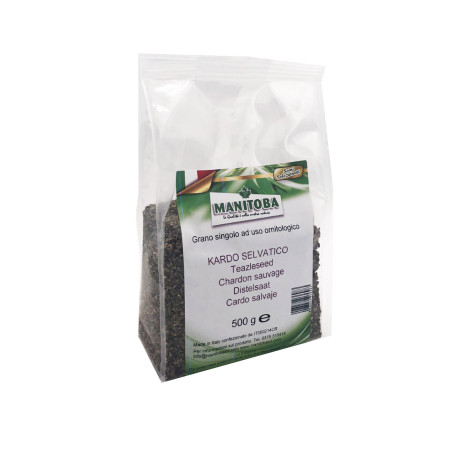- In the process of being restocked






Reference: 3698/S
Common names:
Cardère sauvage, Cabaret des oiseaux, Lavoir-de-Venus, Peigne-à-Loup [Fr], Grote kaardebol [Nl], Wilde Karde [De], Cardo dei lanaioli, Scardaccione selvatico [ Il], Cardencha, Cardo de cardador [Es].
Dipsacus fullonum Linnaeus, 1753
Common names:
Cardère sauvage, Cabaret des oiseaux, Lavoir-de-Venus, Peigne-à-Loup [Fr], Grote kaardebol [Nl], Wilde Karde [De], Cardo dei lanaioli, Scardaccione selvatico [ Il], Cardencha, Cardo de cardador [Es].
Etymology:
Dipsacus comes from the Greek διψαώ [dipsao], to be thirsty. The Romans called the plant "Lavacrum veneris", meaning the basin of Venus, because these leaves of the stem are joined at the base, forming rainwater harvesting cups surrounding the stem.
Carders get their name from the fact that spiny flower heads were used to comb wool fabrics, to "tease" the fibers before spinning them (from Old English teasan, which means to tease). The heads of Fuller's cardera (D. sativus) have curved spines; They were also used to lift the pile, or "nap" of fabric.
Length of flower head: 5 to 8 cm. Stem length: 50 – 150 cm.
Wild thistle is a tall, rather sculptural plant, with a deeply inclined and furrowed stem. The leaves at the base of this stem form a rosette, while those on the stem are arranged in pairs. The tube-shaped flowers are purplish-pink in color and are protected by spines.
Biology:
Wild thistle is a biennial plant that grows from a strong yellow taproot. The flowers are present from July to August and are pollinated by various bees and long-tongued flies. It is known to catch invertebrates in its water-filled leaf bases, but experimental tests of the reproductive benefits of this have been lacking. One study showed that adding dead Diptera larvae to the base of the leaves caused a 30% increase in seed formation and seed mass. This study provides the first empirical evidence of carnivorous reproductive benefit in Dipsacus fullonum.
Habitat: rugged meadows, hedgerows, thickets, roadsides and vacant lots.
The sandblasted perch with coral is ideal for keeping the claws of your birds clean and sharp.
This perch also allows your birds to keep a beak in perfect condition.
Birds even like to nibble it for hours of entertainment.
Birds like to remove the shells from peanuts and then eat the peanuts. Peanuts are a source of energy, which is very important for the long winter months.
Unpeeled peanuts can be given to parrots as a treat.
Gold Red Factor Bird Food 5kg - Fatty Red Food - NutriBird.
Egg food with red colouring for canaries, native and exotic birds.
Contains all the necessary elements for young and adult birds during growth and moulting.
Moistened with 100% natural honey.
Contains 75 mg of canthaxanthin per kilo to give birds a beautiful red pigmentation.
Contains an extra supplement of lysine and methionine for optimal feather growth and development.
Against rats and mice.
Ready-to-use paste bait and strong active ingredient: Brodifacoum 0.0025%. The best value for money when it comes to poison for rats and mice! Suitable for control of mice, brown rats and black rats. 1 ingestion is deadly!
Large 3.5 kg package.
AVES Lorinectar is a complete water-soluble food for Loris and Loriculus, including Charmosyna species. It can be used as a complementary feed for parakeets. Lorinectar is made from the best raw materials and has excellent nutritional value. Due to the high quality of this feed, it is accepted without problems by birds without problems. AVES also offers a feed for young loris available under the name AVES Loristart. With the combination of Loristart and Lorinectar, all types of Lori are bred and maintained in excellent health. This product contains all the essential vitamins, minerals and trace elements.
Combating the black spot in nestlings.
It is important to take action with the breeders:
1) by strengthening the immune system,
2) by targeting intestinal pathogenic bacteria.
Instructions for use:
30-40 g (3-4 spoonfuls) per kg of feed during the chick feeding period and for 5-7 days
once a month throughout the year for all breeders.
Very high-quality liquid calcium.
Can be mixed with water or on food.
Dosage: 15ml per litre or 30ml per kilo of seeds or pâtée.
Plastic fixing hook for Tino transport boxes (ART200, ART202, ART203, ART205, ART234, ART235,...)
This product contains entirely natural and highly selected fibres.
Perfect hygiene and careful treatment make these fibres flexible and dust-free.
This product is designed for nests of all bird species.
Professional mix for goldfinches.
Mixture of quality seeds for breeding & good condition.
Enriched with the Premix Blattner Goldfinch particular.
A wide variety of special seeds.
ball - fatty winter food for birds of nature
Mixture of pure beef fat, cereals and seeds.
Controlled on the presence of ragweed seeds, in order to preserve your garden from this parasitic plant.
Ideal in winter.
Without Net.

Common names:
Cardère sauvage, Cabaret des oiseaux, Lavoir-de-Venus, Peigne-à-Loup [Fr], Grote kaardebol [Nl], Wilde Karde [De], Cardo dei lanaioli, Scardaccione selvatico [ Il], Cardencha, Cardo de cardador [Es].
